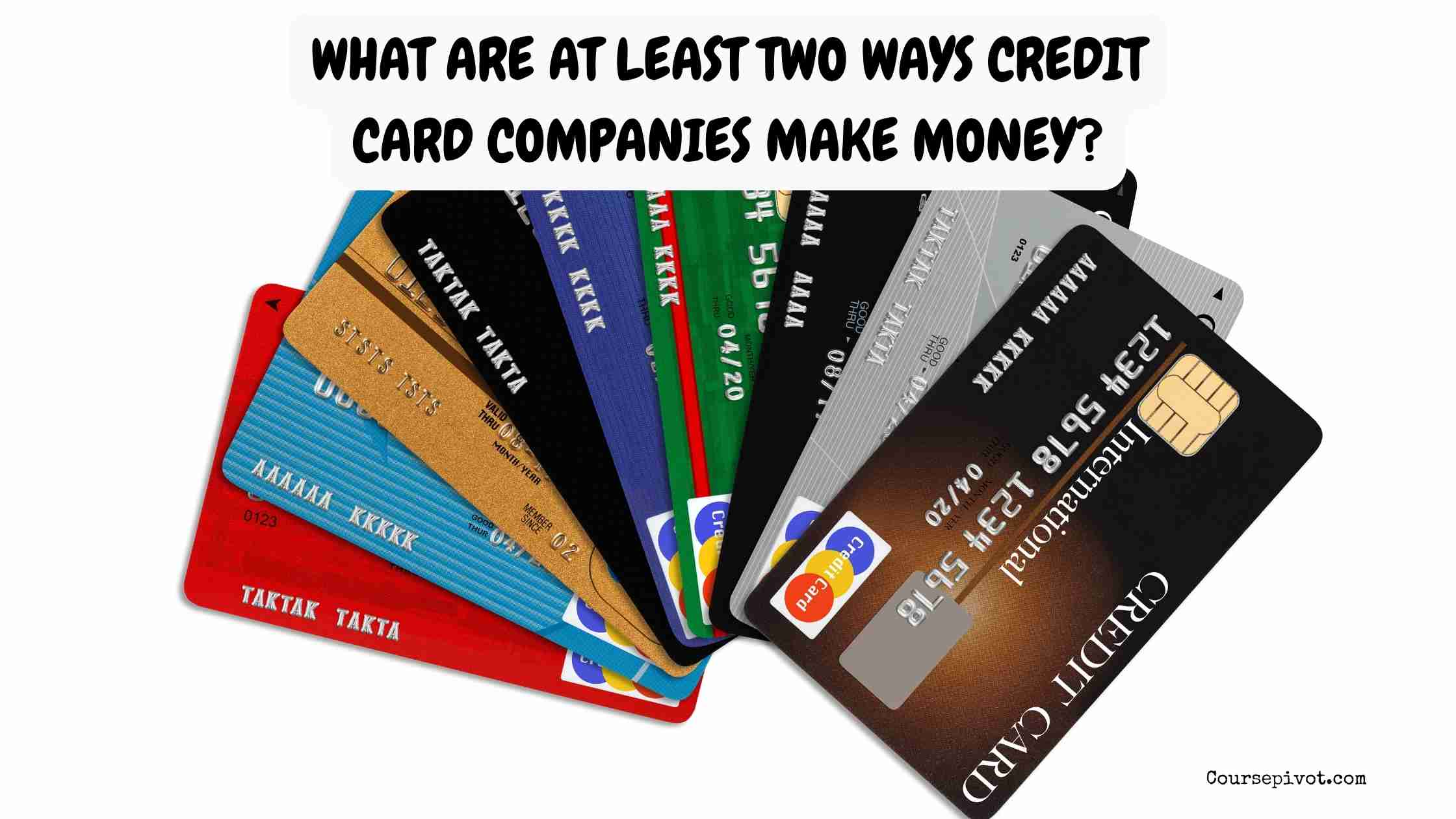
What Are at Least Two Ways Credit Card Companies Make Money?
Credit card companies are financial powerhouses, generating billions by facilitating transactions and offering credit to millions. I’ve been intrigued by how they turn everyday swipes into steady revenue streams, balancing risk and reward. Understanding what are at least two ways credit card companies make money reveals the mechanics behind their profitability.
Table of Contents
In this article, I’ll explain five key ways they earn revenue, based on my research and insights into the financial industry as of May 2025. These methods highlight their business model’s complexity. Let’s dive into how credit card companies profit and what drives their success.
Ever wondered how your credit card company cashes in? It’s more than just your bill—it’s a web of fees and charges. Ready to explore five ways they make money?
Credit cards are everywhere, but their profits are no accident. I’ve seen how clever strategies keep their coffers full. Let’s uncover how credit card companies thrive.
1. Interest on Balances
Credit card companies earn significant revenue by charging interest on unpaid balances when cardholders don’t pay their full statement each month. This is a primary way they make money. I’ve been struck by how interest compounds their profits.
- Mechanism. Interest rates, often 15–25% APR, apply to carried balances; in 2024, U.S. consumers paid $130B in credit card interest, per CFPB.
- Scale. 45% of cardholders carry a balance, averaging $6,300, with issuers like Chase earning 20% of revenue from interest, per 2025 NerdWallet.
- Example. A $1,000 balance at 20% APR accrues $200 yearly if unpaid.
Why it matters? Interest is a steady income stream, especially from revolving debt.
2. Interchange Fees
Merchants pay interchange fees to card companies for processing transactions, a major revenue source. This method of earning is often invisible to consumers. I’ve learned how every swipe fuels their bottom line.
- Process. Fees, typically 1.5–3% per transaction, are charged to merchants; Visa and Mastercard collected $90B globally in 2024, per 2025 Nilson Report.
- Impact. A $100 purchase yields $2–$3 for the issuer, with 60% of their revenue from interchange, per 2024 Forbes.
- Scale. With $8T in U.S. credit card transactions yearly, per Federal Reserve, fees add up fast.
Why it’s key? Interchange ensures profits from every purchase, regardless of cardholder payment.
3. Annual and Other Cardholder Fees
Card companies charge cardholders annual fees for premium cards and other fees for services like balance transfers or cash advances. This revenue stream targets added value. I’ve noticed how rewards cards often come with a catch.
- Examples. American Express Platinum ($695/year) or Chase Sapphire Reserve ($550); 30% of cardholders pay annual fees, per 2025 WalletHub.
- Other fees. Balance transfers (3–5% of amount) and cash advances (5%) generated $10B in 2024, per CFPB.
- Impact. Premium card fees account for 15% of issuer revenue, per 2024 Motley Fool.
Why it matters? Fees boost income while offering perks to loyal customers.
4. Late Payment and Penalty Fees
When cardholders miss payments or exceed credit limits, companies charge penalty fees, adding to their profits. This way of making money capitalizes on errors. I’ve been surprised by how much these fees contribute.
- Details. Late fees, capped at $41 in 2025 per CFPB rules, earned issuers $7B in 2024; over-limit fees add $1B, per 2025 Statista.
- Frequency. 20% of cardholders incur late fees annually, averaging $100/year, per 2024 Experian.
- Example. A missed payment on a $500 balance incurs a $41 fee, boosting issuer margins.
Why it’s significant? Penalties are a reliable revenue source from non-compliant accounts.
5. Foreign Transaction Fees
Card companies charge fees for purchases made abroad or in foreign currencies, tapping into global spending. This revenue method leverages travel. I’ve seen how these small charges pile up for frequent travelers.
- Rate. Fees, typically 1–3% per transaction, generated $3B in 2024, per 2025 BankRate.
- Usage. 25% of cardholders make international purchases, with 40% paying these fees, per 2024 TransUnion.
- Example. A $1,000 purchase abroad at 3% adds $30 to the issuer’s revenue.
Why it matters? Foreign fees capitalize on growing global commerce and tourism.
Read our blog on companies in basic commodities
What’s Next for You
Understanding what are at least two ways credit card companies make money is like decoding the financial engine behind your card. I’ve been fascinated by how these five methods—interest, interchange fees, cardholder fees, penalties, and foreign transaction fees—power firms like Visa and Chase, with the U.S. credit card market at $1T in 2024, per Federal Reserve. Their strategies drive $400B in annual revenue, per 2025 Nilson Report. Ignoring these costs can drain your finances; mastering them empowers you. Will you let card fees sneak up on you, or take control of your spending?
Here’s how to act:
- Pay on time. Clear balances monthly to avoid $130B in interest and $7B in late fees, per CFPB.
- Choose wisely. Pick no-fee cards or waive annual fees, saving $695/year on premium cards, per WalletHub.
- Stay informed. Check BankRate or NerdWallet for card terms and industry trends.
Credit cards are tools, but their costs are real. Why it matters is about financial freedom. Start today to use them smartly and keep more in your pocket.
Cite this article
You can copy and paste your preferred citation format below.
Martin, L. & Arquette, E.. (2025, May 31). What Are at Least Two Ways Credit Card Companies Make Money?. Coursepivot.com. https://coursepivot.com/blog/what-are-at-least-two-ways-credit-card-companies-make-money/



